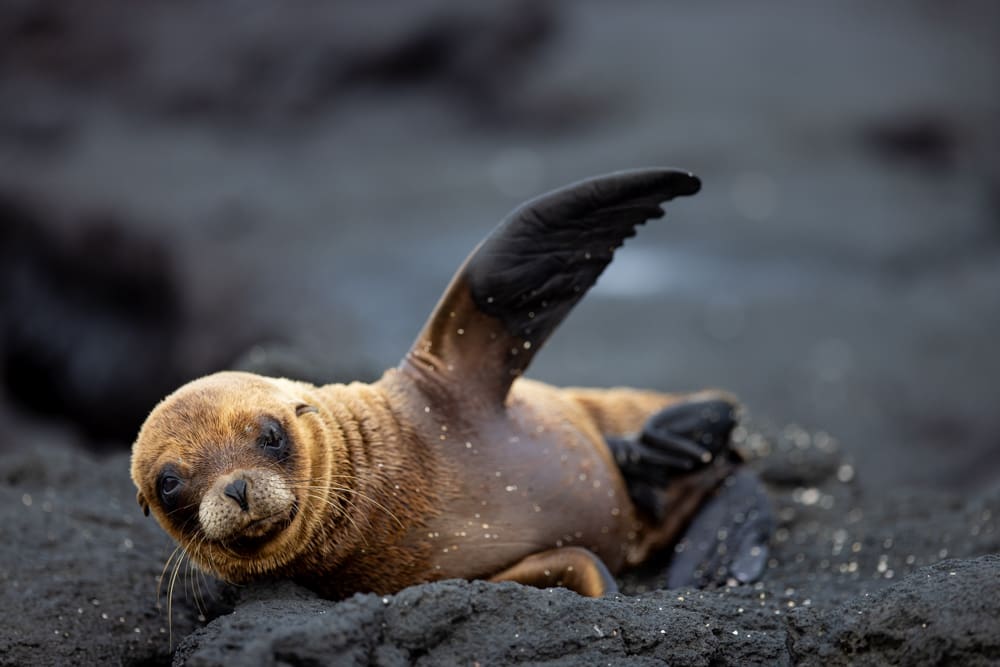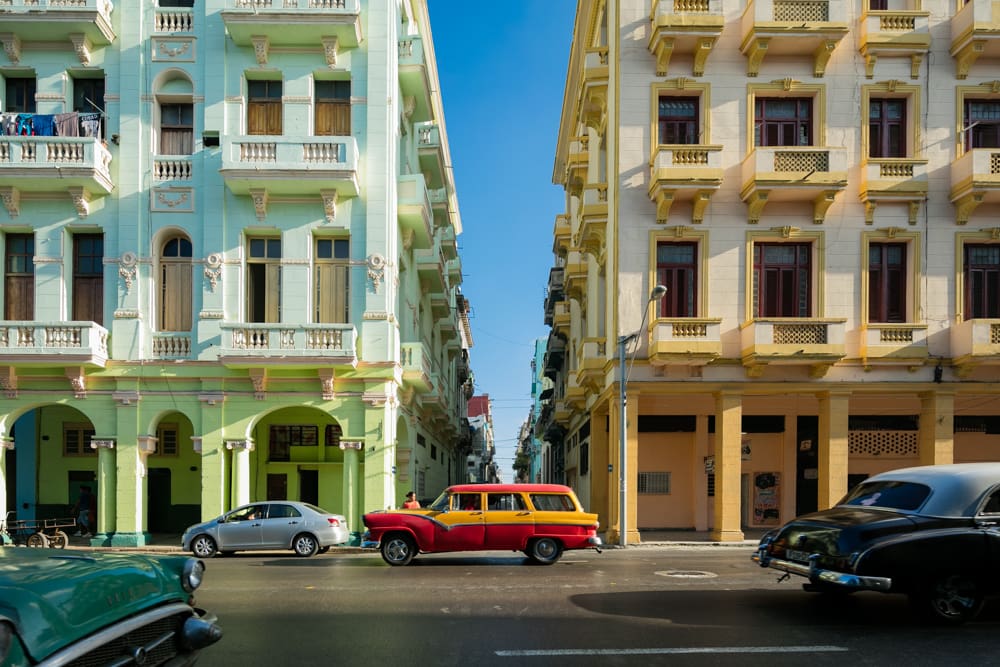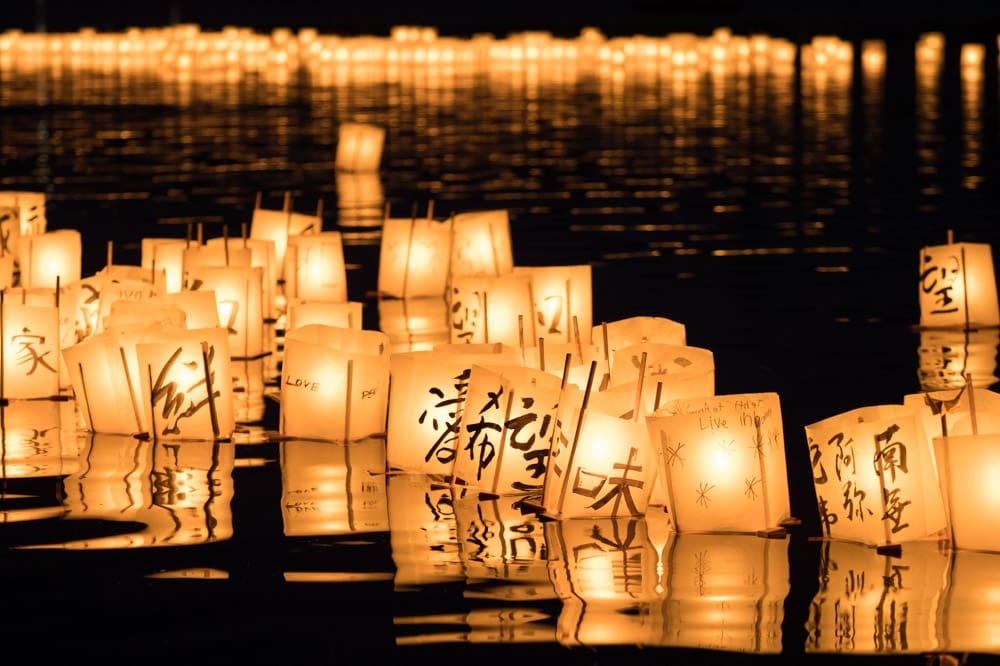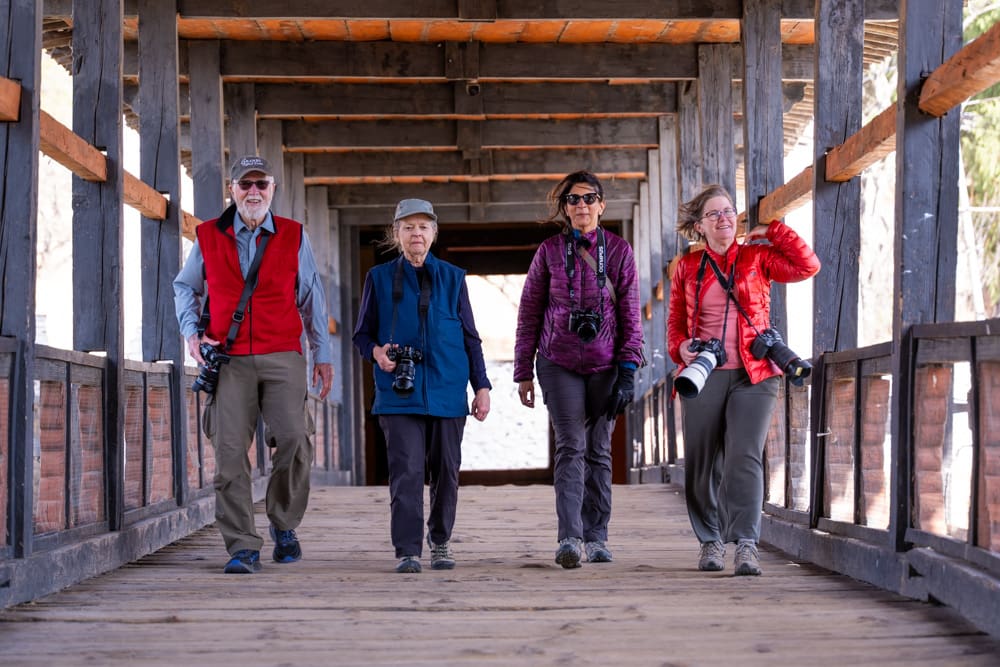Anyone that has used a Fujifilm camera knows that they are just a little bit different. Many of Fujifilm’s cameras feature a manual shutter speed dial, manual aperture ring on the lenses, and a host of manual or traditional controls — the tapered threaded cable-release imbedded in the shutter button is another great example. Different doesn’t always mean better, however it does mean that it will stand out in a crowd. The new Fujifilm GFX100RF is one of their latest, and perhaps most quirky, camera so far.
Fujifilm’s many distinctive characteristics might be viewed as weird, unconventional, or inefficient. Others will see those same features as quirky character traits that make those cameras even more endearing. Say what you want, but I believe the Fujifilm GFX100RF to be one of the most intriguing, compelling, and inspiring digital cameras of all time. Not only that, but I also find it to be practical, of high quality, and forward thinking to what photography might be in the future.
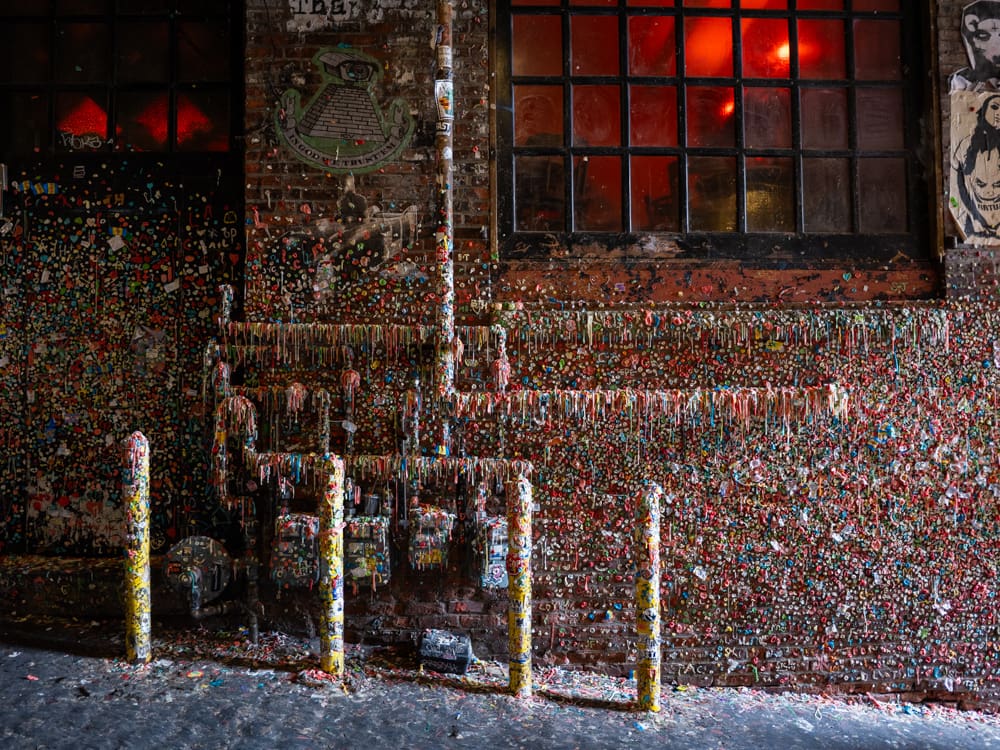
Fujifilm GFX100RF @ 35mm (28mm FF equiv.) | 4:3 Aspect | F/4 | 1/30 SEC | ISO 1600
GFX100RF basics
For those that haven’t checked out the newest Fujifilm camera, let me offer the briefest of descriptions. Fujifilm has harnessed their history, diversity, and quirkiness all into the first-of-its-kind medium format compact fixed-lens camera. Essentially it’s a high-end (expensive) point-and-shoot camera with an image sensor 67% larger than full-frame (FF). Featuring 100 megapixels and a prime lens, you can be guaranteed more than enough quality when it comes to resolution. The lens is a 35mm f/4, which equates to a 28mm f/3.2 in full-frame terms.
Obviously this is not the right camera for everyone; in fact this camera is for a very small percentage of the photographic population. Fujifilm engineers have claimed that every production decision going into the GFX100RF was made with compact-size a priority. When compared to the popular X100 series camera, the GFX100RF is only 0.3in (5.5mm) wider, 0.7in (15mm) taller, and 0.8in (21mm) deeper. Its weight of 1.6lb (735g) is 60% more than the X100VI, but that still falls into a pretty lightweight category considering that there are no other lenses or accessories that it requires.
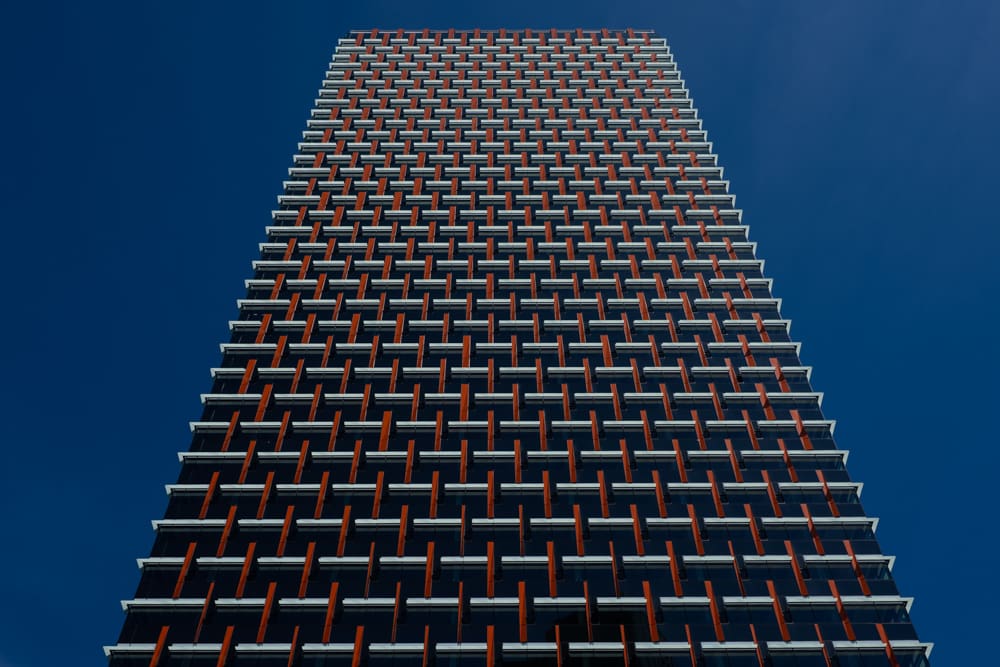
Fujifilm GFX100RF @ 45mm (35mm FF equiv.) | 4:3 Aspect | F/4 | 1/30 SEC | ISO 1600
The criticisms
Photography is filled with tradeoffs and there’s no shortage of opinions when it comes to what the right balance of features, size, speed, and price should be. The two most discussed feature criticisms with the GFX100RF have been the lack of In-Body Image Stabilization (IBIS) and the slow f/4 lens. I agree that IBIS would be a welcome addition even if it meant a few more millimeters on the depth and height of the camera. My guess is that it was left out partially for size and price, but mostly so that a possible version two of this camera could feature it as an addition.
For those that believe f/4 is slow, welcome to the world of medium format. Fast lenses and large sensors are a difficult match as they tend to be expensive, large, and heavy. Fujifilm has previously produced medium format point-and-shoots; back in the 1990’s, with the GA645 series, they featured a prime with an f/4 maximum aperture and a zoom with an f/4.5-6.9 maximum aperture. Going wider than f/4 with medium format just isn’t a realistic ask for a compact camera.
Traditionally, most fixed-lens cameras featuring a prime lens have had a 35mm focal length (or equivalent). The uber-popular Fujifilm’s X100 series has a 23mm lens in front of an APS-C sensor, which equates to a 35mm focal length on full-frame. Throughout photographic history, the 35mm lens has been the go-to choice for a single focal length that provides the best versatility for the most people in most situations. From time to time manufacturers will offer cameras with slightly wider or longer lens options; Leica has options with 28mm and 43mm.
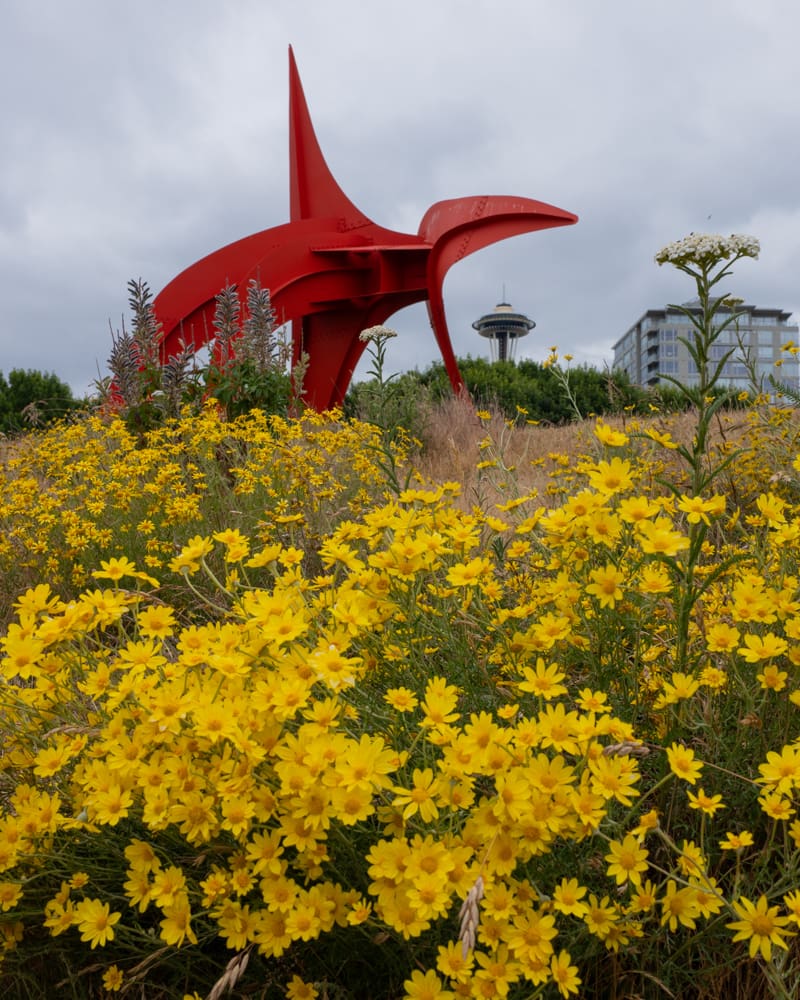
Fujifilm GFX100RF @ 45mm (35mm FF equiv.) | 5:4 Aspect | F/16 | 1/60 SEC | ISO 125
The choice of a 35mm lens with this larger sensor (44x33mm) equates to a 28mm full-frame lens. This was another trade-off decision that made for a slightly smaller camera and one that was more geared to scenics, travel, and landscapes. The diagonal angle-of-view of 75.4º for the 28mm lens (FF) and 63.5º for the 35mm (FF) may not seem like much of a difference to the uninitiated, but it’s more than enough to start a heated debate among devotees.
While a faster lens would be nice to offset the lack of IBIS, it was never going to add much to the subject isolation ability of the camera. Anyone with a fast and wide lens knows that you don’t get much bokeh or shallow depth-of-field until you get into the macro range. Giving the GFX100RF an f/2.8 lens would do little in the world of depth-of-field, but would have made the camera bigger, heavier, and more expensive.
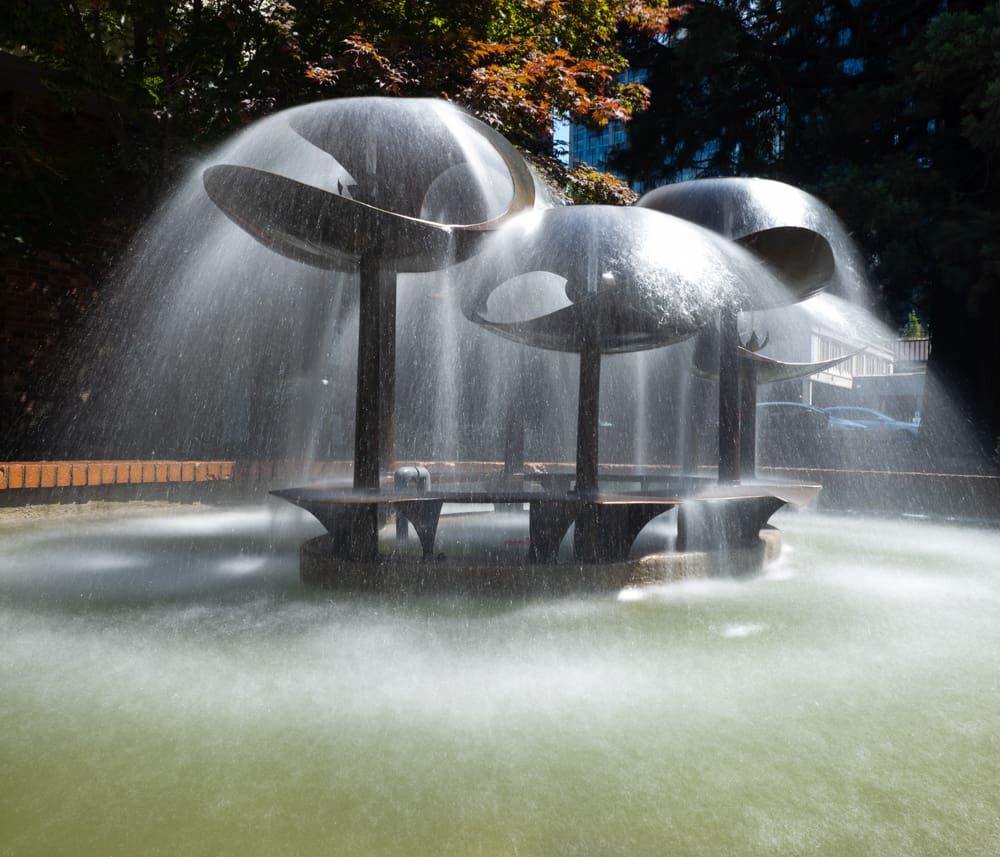
Fujifilm GFX100RF @ 35mm (28mm FF equiv.) | 7:6 Aspect | F/22 | 4.0 SEC | ISO 40
Things get interesting here | Aspect ratio
Photographs, almost without exception, are rectangular in shape; the exact aspect ratio of that shape (1:1, 3:2, 4:3, 16:9) is determined by the shape of the imaging sensor or film area. If you want to utilize all of the available pixels, or film area, you want to maintain the same aspect ratio of the image area (sensor) with the image in its final usage.
When you start with an abundance of pixels, you are free to crop away portions of the frame so that the aspect ratio fits your subject matter and not the other way around. Most cameras offer either a 3:2 or 4:3 aspect ratio; both are practical and have a long history in photography, but there are many other options to choose from.
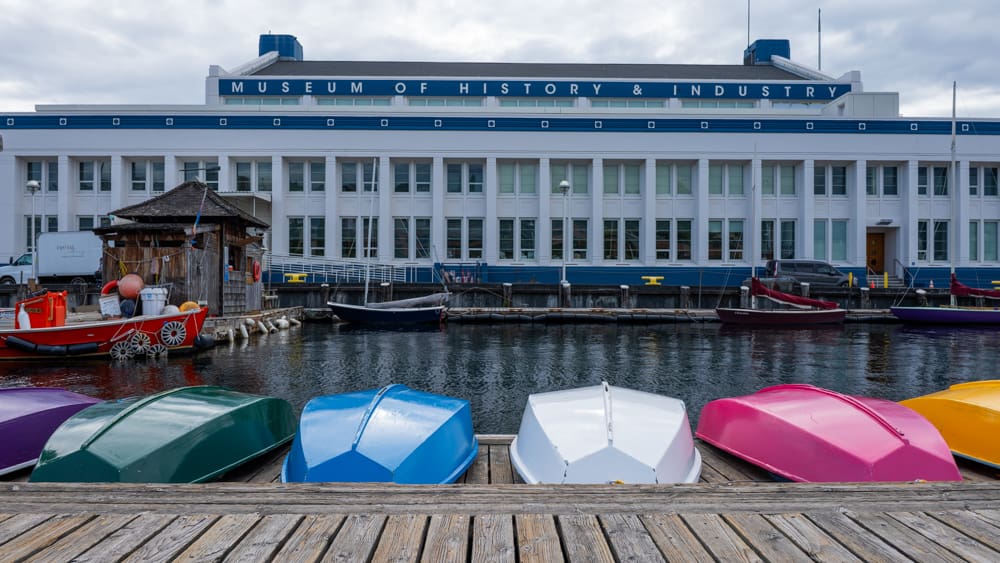
Fujifilm GFX100RF @ 35mm (28mm FF equiv.) | 16:9 Aspect | F/8 | 1/125 SEC | ISO 80
Medium Format aspect ratio
Medium format film cameras were some of the most diverse and unique cameras ever offered in the world of photography. The link between all of them was their usage of 120 or 220 roll film. This was the largest commonly available roll film on the market which measured about 61mm across. The 120 version of the film was about 32in (820mm) in length, and the 220 version was about double that.
A variety of image areas were utilized by the different medium format cameras. A vertical format of 60 x 45mm (6×45) allowed for the maximum number of images (15) on a roll of 120 film. Some companies like Hasselblad staked their identity around only offering a square 60x60mm (6×6) image, which resulted in 12 shots per roll. The 60x70mm (6×7) cameras could only capture 10 images; the 60x90mm (6×9) would only record 9; and the giant 6×17 cameras would get a mere 4 images on a roll of 120 film.
Fujifilm has a long history of making medium format cameras with all those aspect ratios, and more. The GFX100RF camera is the first camera in a very long time to feature an aspect option with an outside physical control. The Panasonic DMC-LX1 and its twin, the Leica D-Lux2 from back in 2005, is one that I remember in particular that also offered this feature. A dedicated aspect dial makes changing framing ratios easy, tactile, and maybe even fun.
Available ratios on the GFX100RF include: 4:3 (sensor ratio), 3:2, 16:9, 65:24, 17:6, 3:4, 1×1, 7×6, and 5×4, as well as an additional custom option. Each of these ratios has a historical significance to Fujifilm as well as being a part of photographic history.
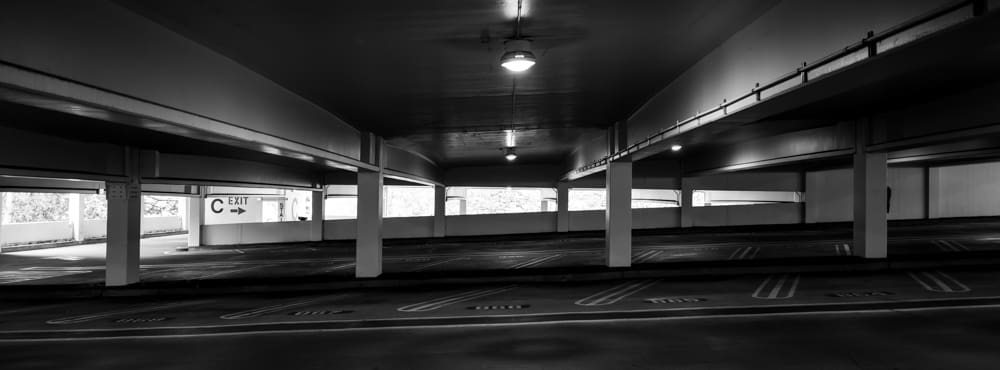
Fujifilm GFX100RF @ 35mm (28mm FF equiv.) | 65:24 Aspect | F/4 | 1/30 SEC | ISO 640
4:3
This is the aspect of the sensor in the GFX100RF, it is also the same as 6×45 which was used in a number of compact medium format Fufjifilm cameras from the past. This is also the format used with the popular Micro Four Thirds system of some other manufacturers.
3:2
This is perhaps the most common and most popular aspect ratio in photographic history. Most all 35mm film cameras used this (24x36mm) except for a few half-frame cameras and some early 24x32mm or 24x34mm options. All digital full-frame cameras use this, as do all APS-C cameras with a 1.5x or 1.6x crop.
16:9
This aspect was established in the 1980’s to support the new standard of high resolution TVs and monitors. It was chosen partly to split the difference between squarish (4:3) TVs and the wide screen cinema standard of 1:1.85. This is now the default standard when shooting video.
65:24
Once upon a time Fujifilm, along with Hasselblad, sold a medium format camera that used 35mm film (TX-1 & X-Pan). These cameras were built by Fujifilm and sold by Fujifilm in Japan, but sold elsewhere by Hasselblad. It was a panoramic camera with an image area of 64x24mm.
The reason for the 24mm part of the equation is easy, that’s the widest image area you can use on a roll of 35mm film. I have not seen a conclusive reason for the 65mm, but I would guess that it may have to do with the size of lens they wanted to put on the camera and a balance between a compact camera and large sensor area. This way they could make use of their existing lens technology that was developed for their other compact 6×4.5 cameras.
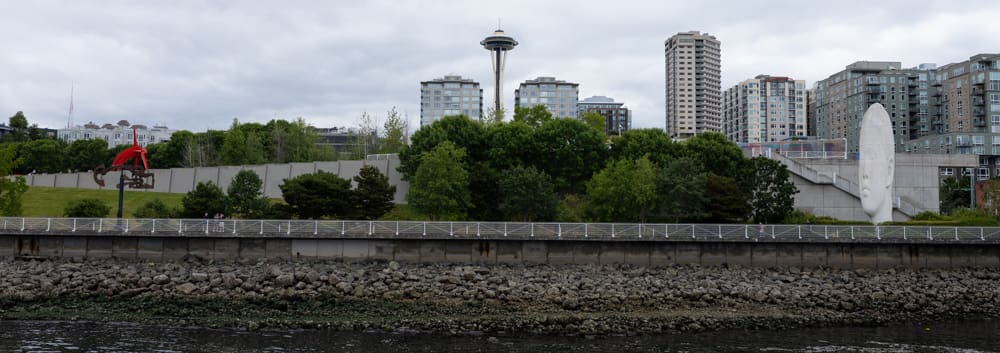
Fujifilm GFX100RF @ 35mm (28mm FF equiv.) | 17:6 Aspect | F/8 | 1/125 SEC | ISO 80
17:6
One of the most recognizable cameras of all-time is the Fujifilm 617 panoramic camera, with its extremely wide body with a roll-cage surrounding the lens. This camera shot an aspect ratio of 17:6 or 2.83:1; that was not far off the popular cinematic aspect ratio known as Ultra-Panavision (2.75:1) used in films like Ben-Hur and The Hateful Eight.
3:4
A vertical version of 4:3 which eliminates the need for turning the camera sideways. This vertical orientation is commonly used for Instagram posts, as well as being how the old Fujifilm GA645 cameras were designed.
1:1
The classic square was used most notably in recent decades by Hasselblad and Rollei which allowed users to have one fixed orientation for holding and shooting the camera. It allowed for relatively easy vertical or horizontal crops to be made with minimum waste. They were very popular with wedding photographers that never knew if vertical or horizontal would be desired from a particular shot. Fujifilm started their medium format offerings with a 6×6 Fujica and then a Fujicaflex in the 1940s and 1950s.
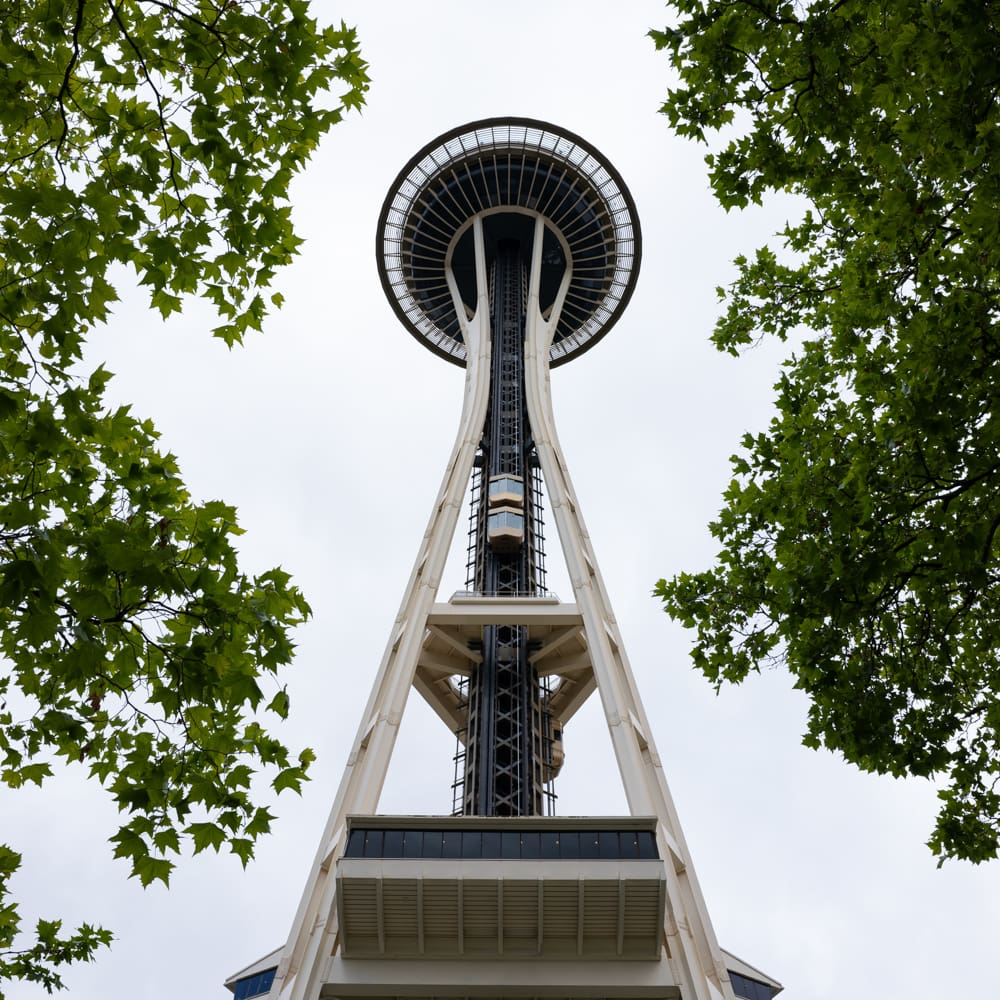
Fujifilm GFX100RF @ 35mm (28mm FF equiv.) | 1:1 Aspect | F/11 | 1/80 SEC | ISO 80
7:6
The 6×7 format was one of the most popular choices with medium format. It took maximum advantage of the available film area, while still keeping a practical image area. Pentax and Mamiya may have been the most popular purveyors of 6×7 camera models, but Fujifilm has offered a variety of models over the decades and as recently as 2010.
5:4
Perhaps the most famous of all aspect ratios is 8×10, the popular picture frame size suitable for hanging on the wall or placing on a shelf. Large format 4×5 and 8×10 cameras were commonly used by professionals of all types.The traditional selling point of this format was that there was minimal cropping to achieve the most popular enlargement sizes.
Choose an aspect
For every ratio there is a reason and the GFX100RF makes that adjustment quick and easy to do. Yes, you are loosing resolution with every choice other than 4:3, but if you know the destination and need for an image, it’s better to see that reality in the viewfinder while you are composing and shooting. In fact you have three options for visualizing your crop, you can have a white line around the capture area, you can have the crop area grayed out, or you can just have the captured area visible with all other areas blacked out.
The important key to this in-camera cropping is that when you have the camera set up properly (as I explain in my new course) you can shoot RAW files that will show you the crop you’ve selected, but it will also allow you to revert to the full 4:3 image file should you change your mind later. You can visualize a scene, select the crop you want, see the world with that view, and maintain all cropping options for later on. If you prefer to cement your choices at the time of capture, you can do that as well by shooting JPEG files. Of course, you have the option of shooting RAW plus JPEG as well.
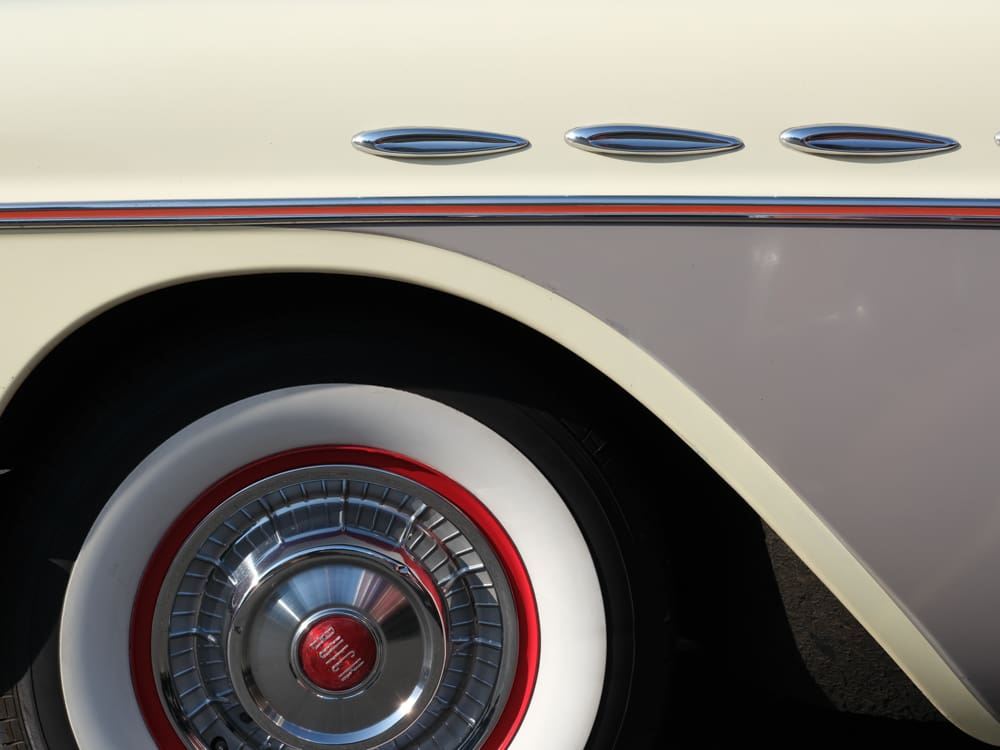
Never say never
Ever since the dawn of digital cameras there has been digital zoom. By cropping in on an image you can create the illusion of a zoom lens. As a sales person for many of these early digital cameras my instructions were clear — never use this feature.
In the early days of digital cameras, resolution was at a premium. We were grasping for more and more pixels to fit our needs. We’d spend great amounts of money to upgrade our cameras so that we could have 2 more megapixels.
With a camera that features 100 megapixels, how often are you needing all those pixels? Chances are, if you are being honest, is that you rarely need all of them all the time.
In a futuristic and ideal world we’d use cameras that had unlimited resolution. We’d choose the angle of view that was right for our subject and then we’d create an image file that contained whatever resolution was needed for that photograph’s usage.
The new GFX100RF camera features a dedicated digital-tele zoom rocker switch, that can’t be reprogramed to do anything else. By moving the lever, you can digitally zoom in to the equivalent focal lengths of 45mm, 63mm, and 80mm with ease. Obviously, each adjustment comes at a cost to resolution.
- 45mm (36mm FF) = 61.5MP (roughly a full-frame crop)
- 63mm (50mm FF) = 31.2MP (roughly an APS-C crop)
- 80mm (63mm FF) = 19.6MP (roughly a Four Thirds crop)
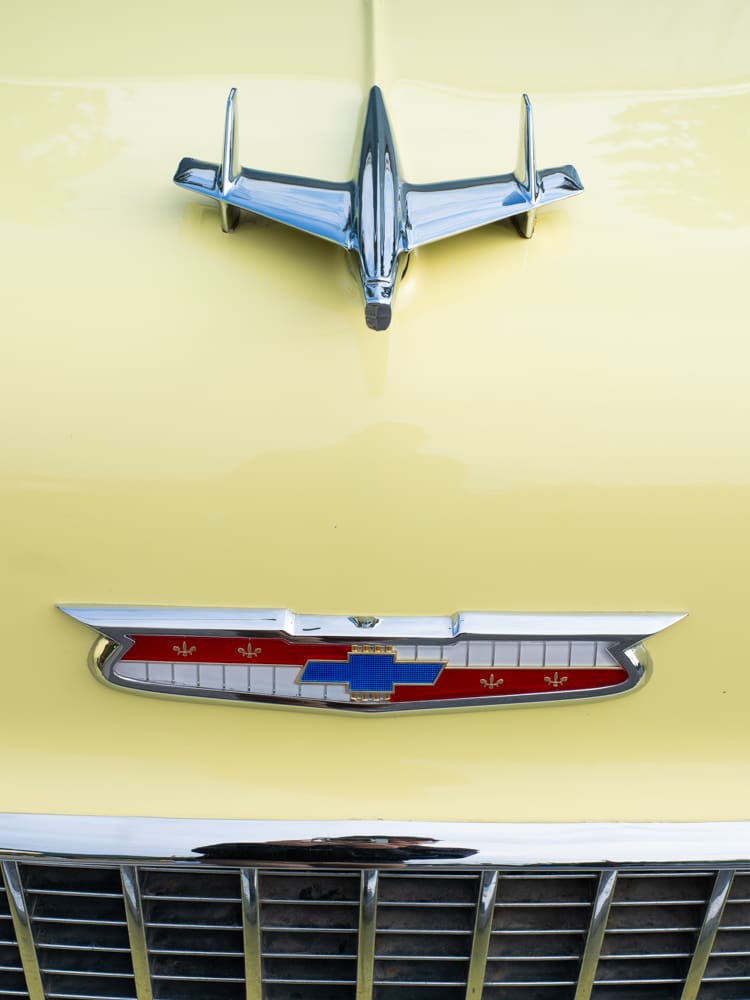
Fujifilm GFX100RF @ 63mm (50mm FF equiv.) | 4:3 Aspect | F/11 | 1/100 SEC | ISO 200
Nobody likes loosing resolution, but how often has 61.5 megapixels not been enough for your needs? The truth is, relatively few photographers have cameras with more than 31 megapixels, and some of the most passionate, devoted, and impressive photographers shoot with 20 megapixels.
I’ve always steered people away from digital zoom or in-camera cropping because it could always be done later in the photographic process. Now with 100 megapixels I can see where this technique is more practical and the downside is far less. Given the resolution and fixed-lens nature of this camera, digitally zooming in is now acceptable in my opinion.
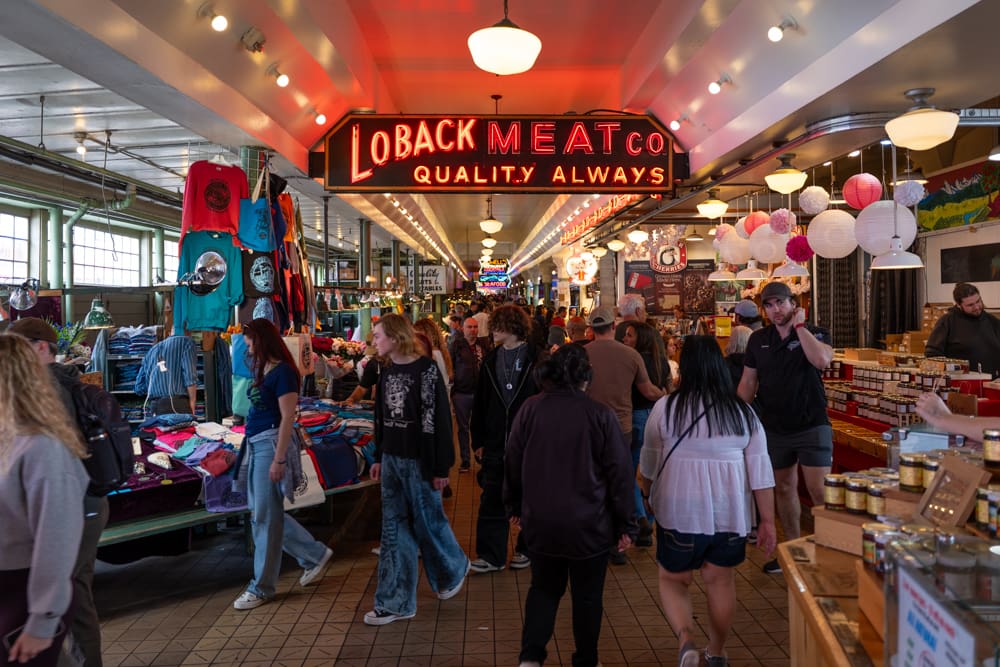
Fujifilm GFX100RF @ 35mm (28mm FF equiv.) | 3:2 Aspect | F/4 | 1/60 SEC | ISO 500
A new way
The truth about how I work is that I frequently crop my images and choose different aspect ratios for a number of reasons. I’ve always preached and practiced filling the frame with what’s most important, so that you don’t need to crop later and I will continue this advice and practice.
However, with new technology comes new ways of doing things. With 100 megapixels I can choose to not use all of them, if they are not helpful to the final image. Just like when I’m at an all you can eat buffet; I don’t overfill my plate just because I can. I can choose to use only what I need, and that sounds like a very efficient way of doing things.

Fujifilm GFX100RF @ 35mm (28mm FF equiv.) | 16:9 Aspect | F/11 | 1/100 SEC | ISO 200
New course
The Fujifilm GFX100RF: Complete Camera Guide is now available in the johngreengo.com shop. If you are wanting a full tutorial of one the most unique and sophisticated cameras to come about in a long time, this is the course for you. As we all know, Fujifilm has a bit of a funky and non-intuitive way of doing things and this course will set you straight on how to operate and customize your camera so that you can make the most of it.
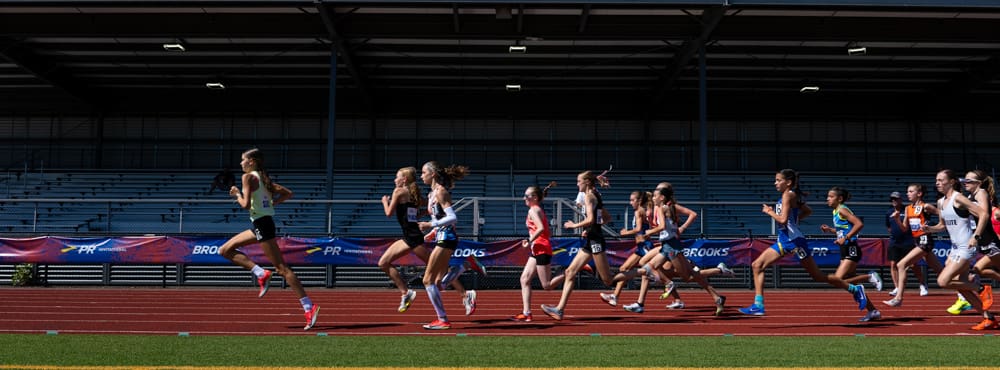
Become part of John’s inner circle
Sign up for the newsletter here — it’s free.
Want to become a better photographer?
Check out John’s selection of photography and camera classes here.
